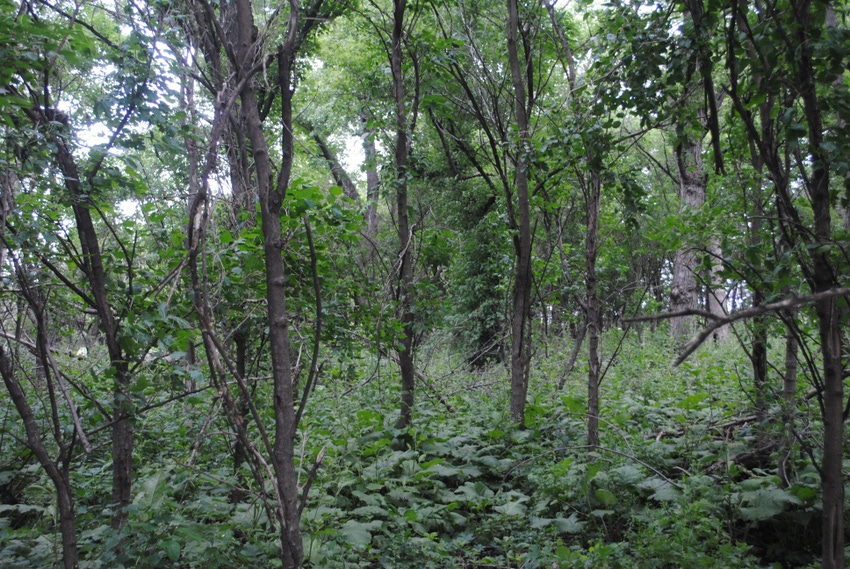
A couple of years ago, I invited our local Nebraska Forest Service forester, Steve Rasmussen, to our farm to help me inventory and analyze the health and sustainability of the woodlands on our property. While many farmsteads and ranches have windbreaks and other scattered woods, we have all of those plus a 5-acre woodland just west of our house.
The hardwood native woodland consists of upper-canopy trees like century-old cottonwoods and a few green ash, silver maples that probably were planted by my grandparents, and an occasional hackberry for good measure.
Over the past few years, some of the largest of these canopy trees have toppled due to wind and ice storms. My wife watched one of our tallest cottonwood trees that had previously been struck by lightning earlier this spring, crash to the ground during a recent windstorm. The gradual demise of these large trees brings forward an important point for anyone who cares for a farmstead forest. What species of trees are growing beneath the greater woodland canopy?
These are the trees that will one day make up the woodlands if no management is applied. For our woods, that would mean an entire thicket of mulberry trees. Now, I love mulberries as much as anyone. Mulberry trees have their benefits for wildlife, and they have even been somewhat coveted by some woodworkers for their unique wood grain. However, 5 acres of mulberries is not what I have in mind for the future of our woodland.
Walking through the woods, Rasmussen noticed quite a few young hackberry, cottonwood and maple seedlings in the underbrush of the woods. There were other native shrubs pushing through the woodland floor as well. But with all of those mulberry trees dominating the understory of the woods and blocking sunlight, there is no way more desirable natives will have a chance to grow to maturity one day.
That's where management comes in. Rasmussen suggested heavily thinning the mulberry trees over time, leaving only an occasional healthy specimen. In areas where I know hackberry and other native trees are trying to become established, he felt that I should thin especially hard to allow sunlight to reach the new seedlings I want someday to make up the upper canopy of my woodland again.
He also suggested planting other natives like bur oak, black walnut or even Kentucky coffeetree into the woods to provide more diversity. I might even try planting one of the new American elm varieties resistant to Dutch elm disease, since elms were so prevalent on our farm when I was growing up.
As for the seedlings, planted and self-seeded, I will need to protect them with plastic tree protectors or tubing around the young trunks for a time to prevent heavy browsing by deer and rabbits.
I may never see the full impact of such management on these woods in my lifetime, but I hope that my children and maybe even their children will be able to one day reap the same enjoyment and benefits we have received from these woodlands over the years. And they won't be stuck with 5 full acres of solid mulberry trees.
About the Author(s)
You May Also Like






